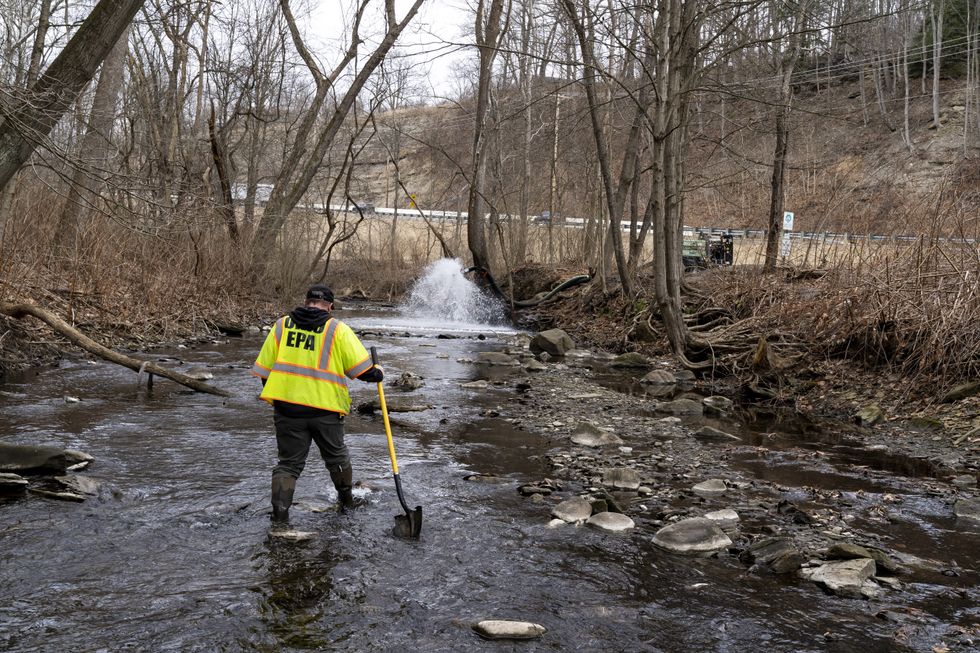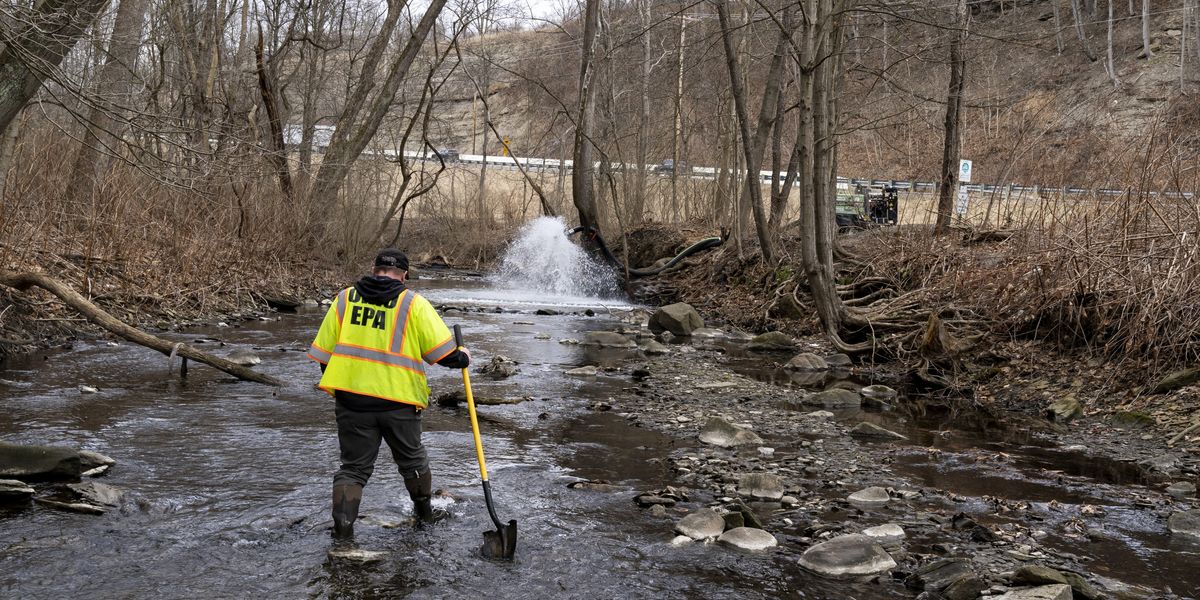
While welcoming a federal order that Norfolk Southern test for dioxins near a derailed train that was carrying hazardous materials through East Palestine, Ohio, over 100 groups on Monday shared “recommendations on how this testing should be conducted to improve transparency, rebuild public trust, and comprehensively address possible releases.”
The U.S. Environmental Protection Agency (EPA) told the rail company to develop a plan to test for dioxins—carcinogenic chemical compounds that persist in the environment and human body and are tied to developmental, reproductive, and immune system problems—only after nearly a month of pressure from residents across Ohio and Pennsylvania.
River Valley Organizing (RVO), Toxic-Free Future, and other organizations signed the letter sent on Monday to agency leaders including EPA Administrator Michael Regan—which states that “to date, Norfolk Southern has done an extremely poor job of building trust with the community of East Palestine and other communities impacted by the disaster.”
“We strongly recommend the U.S. EPA itself conduct the dioxin sampling or hire its own consultants to conduct the testing.”
“To ensure this testing is adequately conducted, and to rebuild public trust, we strongly recommend the U.S. EPA itself conduct the dioxin sampling or hire its own consultants to conduct the testing,” the letter continues. “Norfolk Southern should not be in charge of the dioxin sampling. This testing must be paid for by the responsible parties, not taxpayers.”
Along with laying out what the groups believe should be detailed in the dioxin sampling plan—including goals, locations, detection limits, procedures, and laboratories used—the letter calls for allowing residents to weigh in before testing begins.
“All sampling data and test results should be made available to the public for review in a transparent and easily accessible format,” the organizations argued. “This information must be accessible for review, given the need for results to be meaningful to impacted communities as well as to build trust through transparent action.”
While the EPA has said that its own “monitoring for indicator chemicals has suggested a low probability” that dioxins were released as a result of the February 3 derailment and subsequent “controlled burn” of vinyl chloride, as the letter says:
Responders reportedly punctured and burned more than 115,000 gallons of vinyl chloride in uncontrolled conditions for numerous days, making it likely that dioxins and related chlorinated substances were formed and released into the communities surrounding the disaster site. Four train cars of polyvinyl chloride plastic also burned, also likely forming dioxins. There have been elevated levels of dioxins released in other major accidents involving chlorinated chemicals—from the 2004 explosion at the PVC plant in Illiopolis, Illinois, to the 1997 Plastimet PVC recycling fire in Ontario, to the 2001 World Trade Center attacks.
The organizations also recommended that “the EPA work with other agencies to provide medical monitoring for impacted
communities, especially East Palestine and those in the combustion plume, that desire it.”
“Communities surrounding and downwind of the derailment have a right to know whether the fire resulted in elevated concentrations of dioxins. The testing must be transparent and comprehensive,” the letter asserts. “This would help demonstrate EPA’s commitment to comprehensively responding to this disaster, rebuilding trust with East Palestine and other impacted communities, and advancing environmental justice.”
Leaders and experts at groups that signed the letter echoed its key messages in a statement Monday—including RVO co-executive director Amanda Kiger, who declared that “this community deserves to know what potential toxic chemicals they will have to live with for years to come due to Norfolk Southern’s greed.”
Just like per- and polyfluoroalkyl substances (PFAS), often called forever chemicals, “dioxins are toxic even at very low levels of exposure,” noted Mike Schade, director of Mind the Store, a program of Toxic-Free Future.
Stephen Lester, science director of the Center for Health, Environment & Justice, highlighted that “exposure to dioxins can cause cancer, reproductive damage, developmental problems, immune effects, skin lesions, and other adverse effects.”
“It’s important for the residents of East Palestine that accurate and transparent testing for dioxin be done at the lowest levels possible, so that the residents can begin to understand the risks they face and can make informed decisions to protect their health,” Lester said.
Others took aim at Norfolk Southern, which since the derailment has faced intense scrutiny for its safety culture and practices.
Given that “Norfolk Southern has obvious financial conflicts of interest in the outcomes of all environmental testing and public health evaluations,” Dr. Ted Schettler, science director at the Science and Environmental Health Network, stressed the need for “rigorous oversight of the U.S. EPA, including strict quality control measures and split-sample testing.”
Judith Enck, a former U.S. EPA regional administrator who is now president of Beyond Plastics, said that “it is unfortunate that the EPA took a month to decide to test for dioxins, and then rather than doing it itself, is having Norfolk Southern consultants to do the actual testing.”
“The testing plan is too limited and should be revised to require some testing inside people’s homes, at schools, and air filters in schools and buildings and cars should be tested, not just soil,” she added. “Rain has likely driven contaminants toward groundwater and that water should be tested over a period of months and year[s].”
Enck’s comments came after she wrote in a New York Times opinion piece last week that the EPA should have “ordered comprehensive testing the very day of the burn” and “told residents, especially pregnant women and families with young children, not to return home until it was safe to do so.”
“Instead, it timidly stood back, leaving local authorities, corporate interests, and rumors to fill the void,” she charged. “In lieu of a comprehensive plan, the EPA appears to be playing a game of crisis whack-a-mole, waiting and then responding to the news cycle. This is no way to safeguard our communities.”




